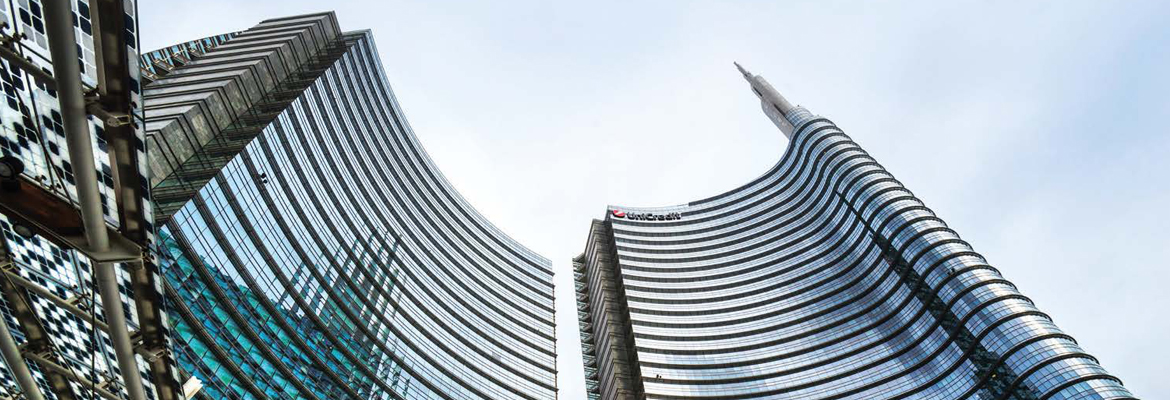Europe is asking us to prohibit – by 2025 – the use of landfills for plastic, metal, glass, paper and cardboard recyclable residues and for biodegradable ones; it is also calling for an almost total ban of landfills by 2030. This forces us to rethink the whole supply chain, increasing our sense of responsibility.
The Concept of End of Waste
It is exactly in this framework that the concept of end of waste develops. This concept implies that a material or an object ceases to be considered a residue and it gets used for other purposes, generating its own market and demand, without producing any negative impacts on human health and the environment (art. 184-ter, Dlgs 152/06).
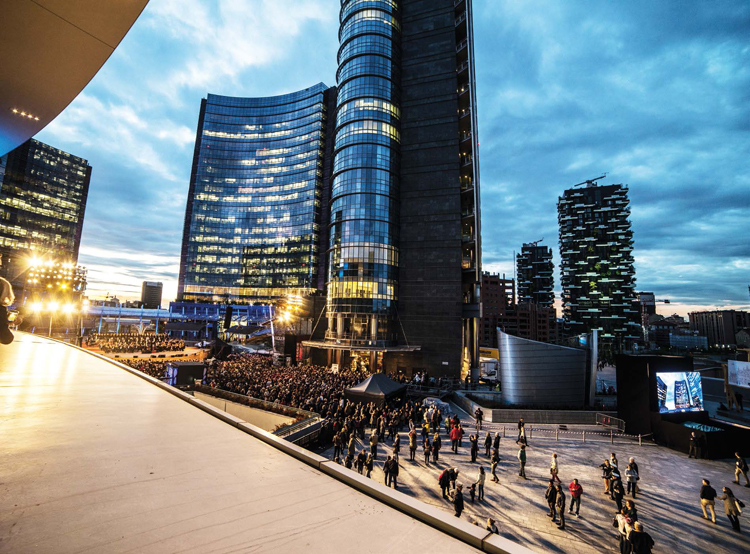
Following this principle, exactly 15 years ago Officina dell’Ambiente decided to create a new and innovative supply chain, and for this reason it is still considered a pioneer in Europe. Starting from waste which is generated in incinerators, the company produces a series of sands and granular materials – the Matrix Family – which find innumerable applications in the building industry: bricks, cement clinker, ready-mix concrete, premeasured cement, asphalt concrete.
The process followed by Officina dell’Ambiente allows for the reuse of 99.6% of incoming refuse, creating a stable and repetitive mineral product which closes the cycle. The Matrix Inside products that they produce for the building industry are totally sustainable, as Officina dell’Ambiente has studied and assigned them the correct usage percentage through the Dop (Declaration of Performance) procedure. This represents, on the one hand, a new step in the recovery cycle of materials, avoiding extraction and the use of mineral raw materials; on the other, it allows for a circular supply chain that ends when the product is being reused and which generates wholly recyclable materials.
 |
|
©Claudio Divizia/Shutterstock
|
From Waste to New Matter
Officina dell’Ambiente has two processing plants: one in Lomella, in the province of Pavia, and the other in Conselice, near Ravenna, with a total treating capacity of 500,000 tonnes of refuse per year.
These plants do not treat industrial waste produced by incinerators, or that coming from intermediate stocking sites or any mixing, but only the residues coming from the incineration of urban solid waste from parts of North and Central Italy, which cannot be differentiated or recycled any further. Over the years, this self-regulation has allowed the company to maintain the intrinsic quality of the final product, both at a technical and an environmental level.
The refuse is a material which is made up mainly of two fractions: one part has a chemical composition similar to that of a mineral material, while the other part is of a metallic nature (mainly iron and aluminium). Before being processed, the refuse needs to be stocked for about 40 days, during which time it goes through a natural chemical process defined as litho-stabilization. Inside the storage loads, the temperature averages 70 degrees centigrade. The aluminium oxidizes, carbon dioxide produces carbonation and new mineralogical phases take place. At this point, the metal component, which is still valuable, is separated through a series of conveyor belts, hoppers and iron removers. At the exit point, urban mining sites of iron and aluminium are therefore created. Out of this fraction, the non-usable part is then extracted, that 0.4% which will go back to the incinerators. At this point, the mineral material gets further refined and at the end of the process it looks like a granular matter of different sizes: one part is comprised between 0 and 10 mm, another one between 2 and 10 mm, and finally there is a sand with a granular size of 0-2 mm, 0-4 mm and 2-4 mm.
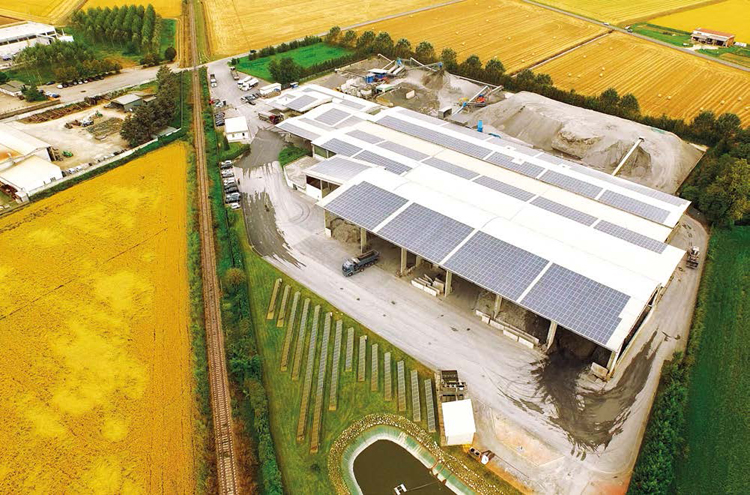
Tracking Process and Certifications
Through the years, Officina dell’Ambiente has provided its plants with Emas registration and its products with CE marking. This work continues beyond the factory walls, as they follow carefully their clients in the realization of the Matrix Inside final products. To complete this process, they have also obtained voluntary environmental certifications. In 2013, they obtained EPD (Environmental Product Declaration), a statement of environmental performance, which provides verified and comparable information on the environmental impact of products and services. The EPD is released by the Swedish Environmental Management Council, following an evaluation of the products’ life cycle assessment, from their arrival at the plant to their final dispatch. Thanks to this certification, the Matrix Family products are eligible to obtain the LEED Certification (Leadership in Energy and Environmental Design).
All the products from Officina dell’Ambiente also comply with the criteria of the Green Public Procurement in the building sector, i.e. those minimum environmental criteria for new construction, restructuring and maintenance of buildings, which aim to reduce the environmental impact on natural resources and increase the use of recycled materials.
Concrete applications
Porta Nuova Garibaldi
Cerification: LEED v2.0 Core&Shell Gold
Used Products: Blocks in CLS, lightweight screed
Porta Nuova Varesine
Cerification: LEED v2.0 Core&Shell Gold
Used Products: Lightweight screed
Porta Nuova Isola
Cerification: LEED v2.2 NC Gold, LEED v2.0 Core&Shell Gold
Used Products: Cement conglomerate for works of non reinforced (concrete) foundations and mass concrete
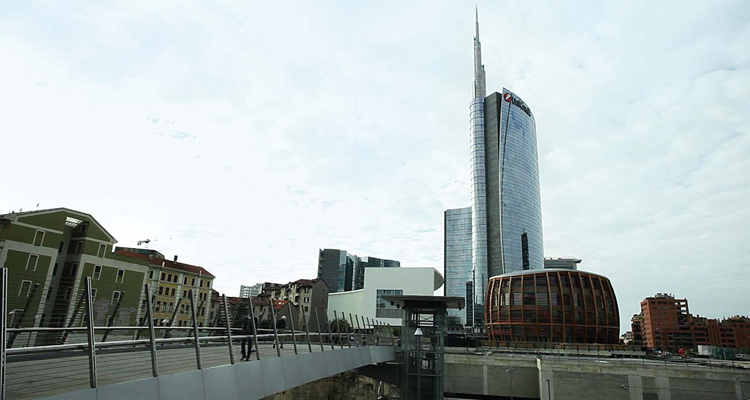
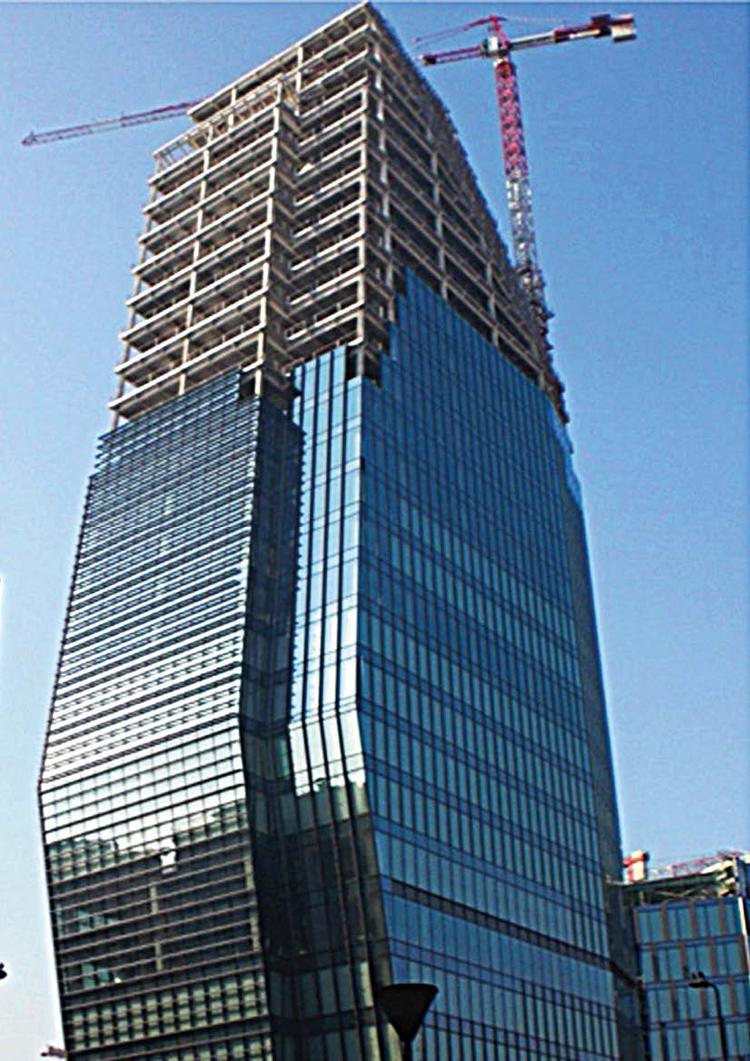
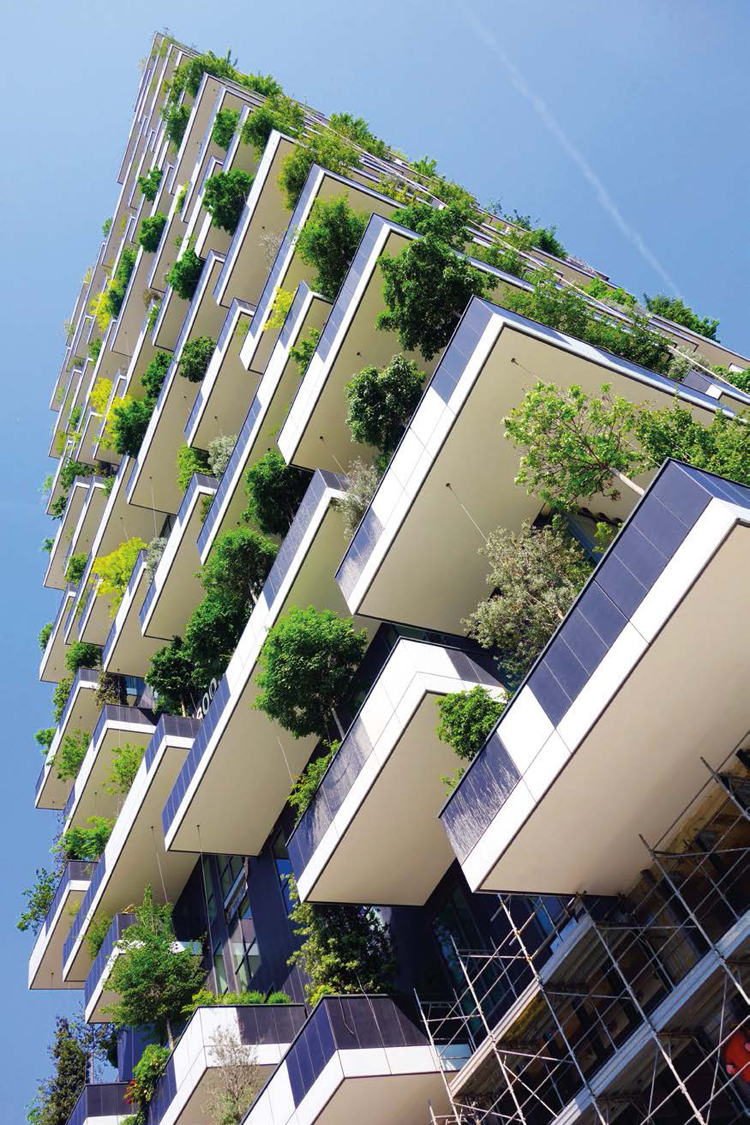
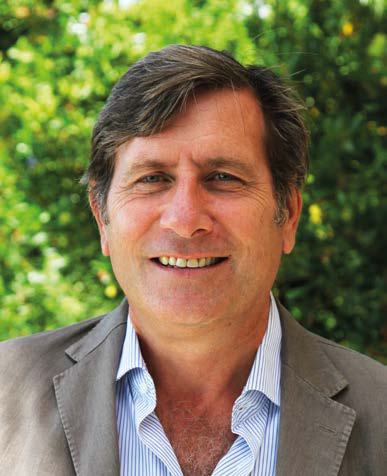 Interview with Alessandro Massalin, Commercial Director at Officina dell’Ambiente
Interview with Alessandro Massalin, Commercial Director at Officina dell’Ambiente
Edited by Rudi Bressa
Aiming at the Quality of Recycled Products
The idea dates back 15 years, when there was still little talk of the circular economy. It was something of a precursor to matter recovery and the end of waste strategy.
Officina dell’Ambiente is internationally renowned for its Matrix products and, as of today, you are the only ones who can produce an EPD artificial aggregate in the whole of Europe. How did you achieve this result?
“What we are striving towards is the quality of the recycled product and the recovery of matter. We have always done that. In 15 years we have never brought any material to landfills. We recycle 100% of all that is recyclable.”
For this reason when you talk about the circular economy you also talk about the quality of the recycled product. What is your idea of the circular economy?
“The circular economy, in order to function, should rely on awareness of the use, which the whole of the supply chain, including municipal companies and designers, should have. They should demand that the manufactured product has some specific technical characteristics. The circular economy should be supported by a sort of intelligentsia who increases the level of compliance in order to close the cycle properly. However, we often hear about recycling in quantitative terms, but very little in terms of qualitative terms. When you pay attention to both the technical performance of the product and its environmental one, the solution to the problem is not shifted to the future anymore, but it is solved at the base. However, in the case of many municipal companies, tenders for waste are still oriented towards the ‘how much,’ which generates a race to the bottom. In other words, they are still thinking in terms of the old linear economy, while the directives of the European Community go in the opposite direction.”
There are some obstacles, though.
“Moving from a linear economy to a circular one is costly. According to us, who have been involved in the building sector for years, the only way to be really part of the circular economy is to think in qualitative terms. That is why we talk about ‘ethical industrial application.’ We have to give our products an awareness of use. Our products are accompanied by a DOP (Declaration of Performance): in this way, we specify the maximum usage percentage, further certifying the circularity of our product.”
That is why you have chosen the monomaterial, only solid urban waste. Did this not restrict your scope?
“Certainly. But when we chose to work in the circular economy, we understood that, in order to guarantee the long-term quality of recycling, it was imperative to work with only one type of waste. A waste that is stable, repetitive and homogeneous. We decided that in order to have a high-level quality product and to guarantee the truthfulness of our certifications, this was the road to follow.”
Info
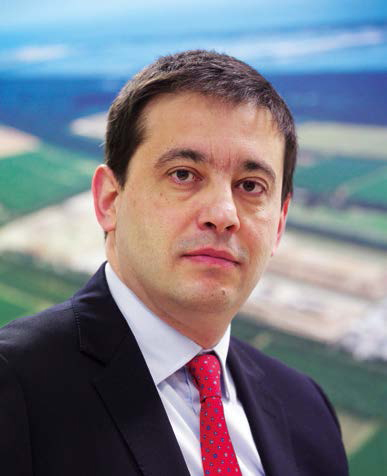 Interview with Filippo Brandolini, President of Herambiente Spa
Interview with Filippo Brandolini, President of Herambiente Spa
Edited by Rudi Bressa
A Supply Chain that Allows for the Recovery of Matter
On the one hand, Gruppo Hera operates at the end of the waste cycle, as an integral part of the collection system. On the other, it is the main actor in the supply chain created by Officina dell’Ambiente, being one of its main providers of waste.
Herambiente and Officina dell’Ambiente have collaborated for a long time in what is a perfect example of circular economy. Residues from the incinerating process find a new use, turning into new matter. How did this collaboration start?
“Up until a few years ago, waste was mainly sent to landfills. Today, there are other destinations. Over the years, our group has experienced the possibility of sending waste to a process of matter recovery, overcoming the landfill problem. We therefore chose a company with innovative processes like Officina dell’Ambiente, which applies transparent procedures and has rigorous environmental certifications. This choice was also dictated by our need to make sure that the waste we provided was treated in full respect of the rules.”
What is the added value of the supply chain you have created?
“We provide Officina dell’Ambiente with 130-170,000 tonnes per year, about half of the waste produced in our plants. The contract with Officina dell’Ambiente strikes a balance both at an environmental and economic level, thanks to the traceability and the certification of the product which Officina dell’Ambiente is able to guarantee. The second aspect worth stressing is that this supply chain manages to achieve recycling and recovery of matter. I am referring to iron and non-iron materials, in addition to the recovery of the mineral part of waste as an aggregate in the cement industry. According to literature, iron metals account for between 7 and 15% of waste, while non-iron ones account for between 1 and 2%. We are talking about significant quantities in terms of rational use of resources, which also have an important economic value.”
European directives aim at a progressive reduction of waste sent to landfills by 2030. Is this objective desirable?
“As a group we are convinced that it is possible to reach this target, which means reducing products sent to landfills below 10%. In 2015 we already achieved this result for urban waste. We also know, however, that the total elimination of landfills will not be possible, as there will continue to be non recyclable and non energy-valuable waste.”
Info
 Interview with Daniele Gizzi, Environmental Manager, Aitec
Interview with Daniele Gizzi, Environmental Manager, Aitec
Edited by Rudi Bressa
Fewer Raw Materials, Less Waste in Landfills
The cement industry is the last tile of the mosaic. This sector, which in 2015 produced about 19 million tonnes of cement, uses part of what is classified by law as non-dangerous waste and part of the matter that is not classified as waste, as a substitute to raw materials (clay, limestone and gypsum). The Italian technical-economic association of cement (Aitec), on behalf of the Italian cement producing companies, monitors and provides all the figures on the cement cycle.
The cement industry is the last link in the chain of non-dangerous waste recovery. How does the use of this material impact on the sector?
“As Aitec we have been monitoring the quantity of waste that has been used to recover matter and energy since 2002. The use of alternative materials allows us to save raw materials such as limestone, clay and gypsum (the latter in particular, as it is quite scarce in Italy). This allows us to reduce extractive activity and its impact on the territory. If we look at the matter according to an LCA (Life Cycle Assessment) framework, we realize that this is beneficial for the environment, as we save natural resources, as well as for the industry, as extractive costs are reduced. Finally, there is a reduction in waste to be disposed of: all these materials, if not recovered, would end up in landfills.”
How does our country rank, at the European level, for energy recovery and matter recovery?
“Italy still lags behind in terms of rate of calorie substitution, i.e. the use of waste as fuel: in 2015 we registered a value of 14.9%, while Europe registers 36% on average. If we take the example of cement factories in Germany (62%) and Austria (60%), the gap increases greatly. These are cement factories that also use alternative fuel derived from Italian waste. If we consider instead the recovery of matter, we are totally in line with the rest of Europe. Even more, we are a virtuous country, in particular in the use of ashes derived by coal combustion and incineration.”
What is then the added value of using waste in the production of cement?
“Cement producers are very attentive to the chemical-physical composition of all the materials that enter the ovens, including waste. The fact that the Matrix material has all the environmental certifications and has had them for years, provides us with all the necessary guarantees. This way we save raw materials while optimizing the costs of the industrial process.”
Info


